The exciting city of Bologna and a biennial dedicated to photography on Industry and Work. Say no more, I’m in!
This year’s edition of the Foto/Industria biennial explores the food industry and its complex connections to wider questions of philosophy, politics, history, science and technology, culture, economy. Mixing archive material and contemporary photography, the works selected cover a period of a century. The time frame allows visitors to get a sense of the evolution in the food industry, in our relationship to it but also in photography’s approach to food.
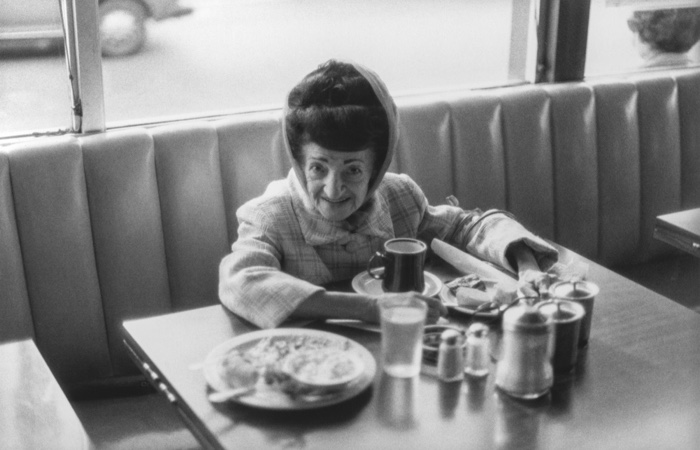
Bernard Plossu, Hollywood, California, 1980
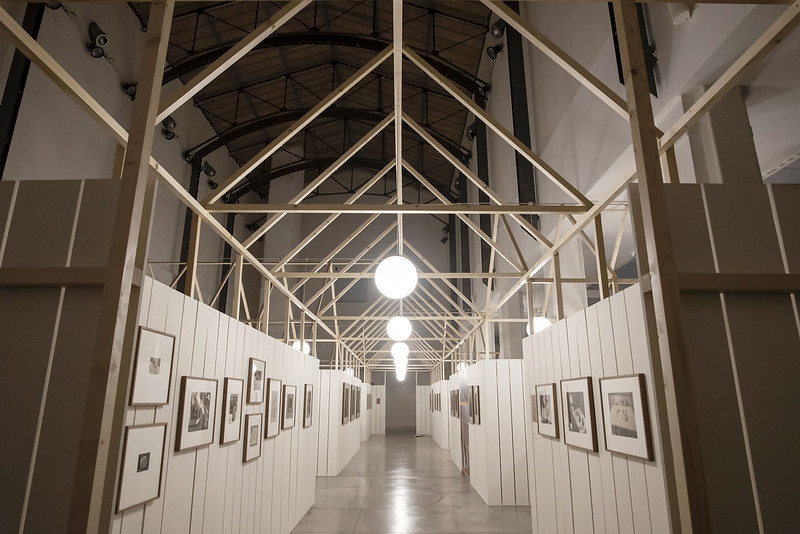
Jan Groover, Laboratory of Forms. Exhibition view at MAMbo. Photo: Foto/Industry
I’ll start this quick overview of the 11 exhibitions of the biennial with a body of work that reveals the massive gap between, on the one hand, our perception of a food system based on ancestral agricultural and farming practices with cows grazing in the meadow, jolly farmers on tractors bringing vegetables to local markets and, on the other hand, a reality made of the advanced technologies, stringent hygiene and safety controls and increased volumes of production.
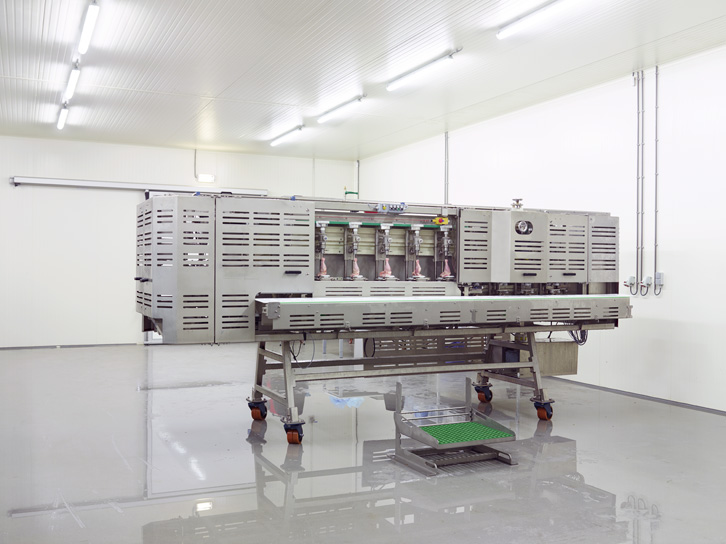
Henk Wildschut, Prototype, Myne Food processing technology, Amsterdam
The result of 3 years of fieldwork and research in The Netherlands, Henk Wildschut‘s Food shows what food manufacturing is like today: optimised, industrialised, accelerated, globalised and engineered to respond to changing demographics, accelerating climate disruptions and the need to produce within the limits of planetary boundaries.
Wildschut’s series brings to light a nuanced picture of the food industry. “I started this assignment with a notion that many people probably have: that our food production system has all kinds of failings,” he explained. “I’ve changed my mind about that. Large-scale production also means innovation, energy savings, better food quality control and even better animal welfare.”
I have my own vision of what a significant improvement of animal welfare would mean and it looks nothing like what I see on Wildschut’s images. #GoVegan and leave animals in peace if you live in a Western country.
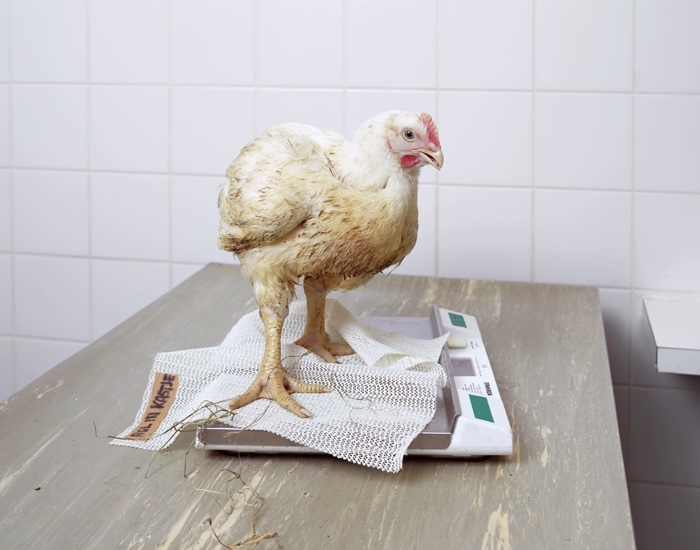
Henk Wildschut, Stichting Wakker Dier, Amsterdam, March 2012. Animal welfare organization Wakker Dier (‘Animal Awake’) gave this breed of industrially bred broiler chickens the name ‘plofkip’ (chicken fit to burst) because of its rapid growth within six weeks from a chick to a 2.3 kilo bird, having consumed exactly 3.7 kilos of feed to get there. The chicken in the photograph is getting a health check from a vet at the request of Wakker Dier
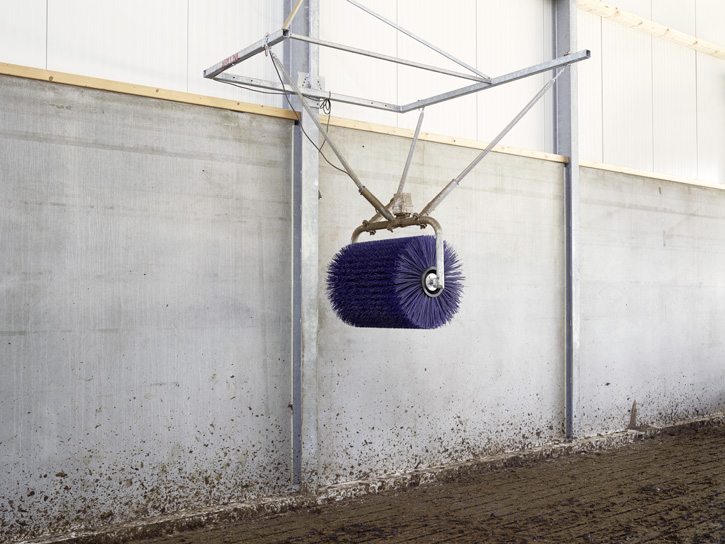
Henk Wildschut, Brushing, Velzeboer, Middenbeemster
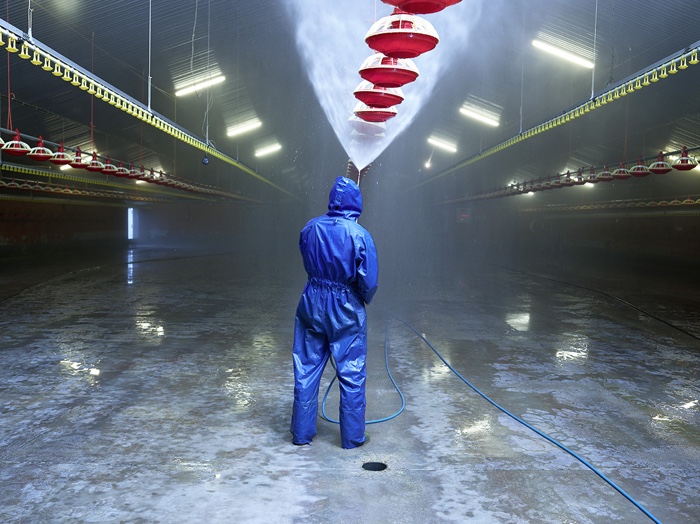
Henk Wildschut, Maatschap Stroo, Slootdorp, July 2012. After three weeks in the Patio module, the chicks–now a full 700 grams–are carried by a conveyor belt to the ‘ground floor’, where within three weeks they will grow to 2.5 kilos. After each cycle, the two levels are washed and disinfected. Once the manure is removed, the whole area is cleaned with a detergent and later thoroughly disinfected with a sprinkler. The process of cleaning takes three days for the Patio module and two days for the ground floor.
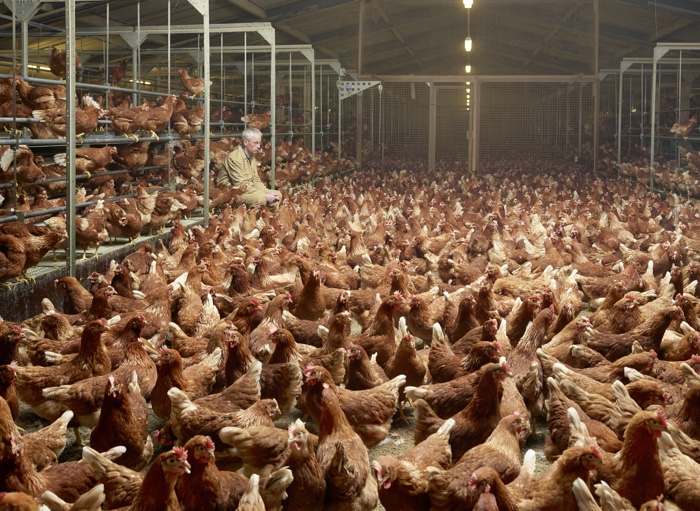
Henk Wildschut, Torsuis Ei, Putten, March 2012. 2,400 m2. Torsius has a total of 120,000 laying hens. Besides the standard free-range birds, the hatchery has a further 5700 organic laying hens. At Torsius there is no need to debeak the chickens; the barns are minimally lit with special high-frequency strip lighting so that the chickens are kept calm. They also have enough distractions and enough room to move. Stressed-out chickens tend to peck others, something that happens a lot less at Torsius
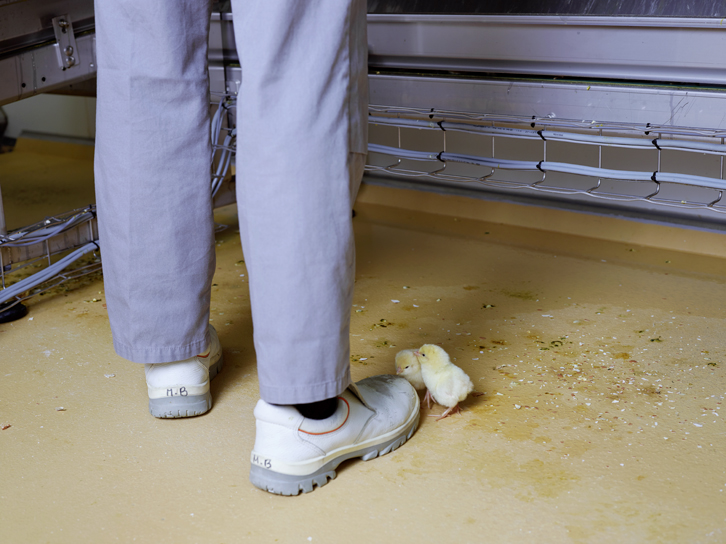
Henk Wildschut, Verbeek hatchery, Zeewolde, July 2012.. As for white poultry, there has been no success as of yet in achieving a clear visual distinction between the sexes. A specialized external firm is enlisted to sex these chicks. The difference can be read off in the wing feathers. One specialist can sex 25,000 chicks a day. The male chicks are carried off on a special production belt to the gassing unit
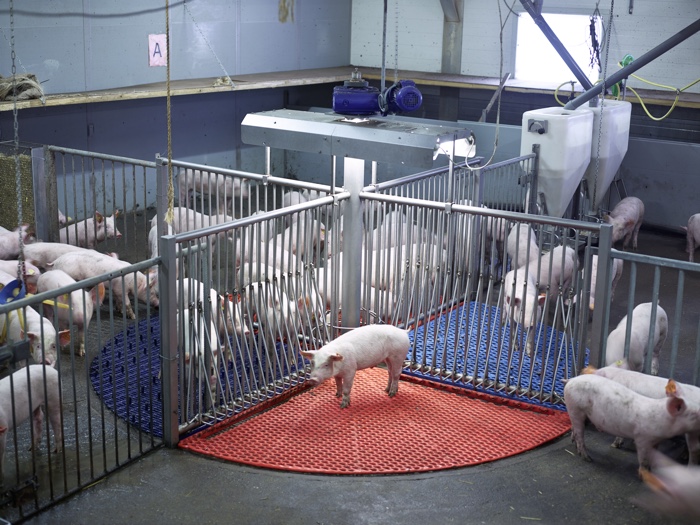
Henk Wildschut, Varkens Innovatie Centrum, Sterksel, August 2012. In the VIC (which translates as Swine Innovation Centre), Wageningen University is working with trade and industry on innovations in pig husbandry. Research on Pigsy, a toilet for pigs, began in 2012. Its development was informed by the pig’s natural behaviour. A pig usually looks first for a place to sleep and then – at a comparatively great distance away – a place to defecate. The research focuses on stimulating and facilitating this natural behaviour as much as possible within the confines of a standard company
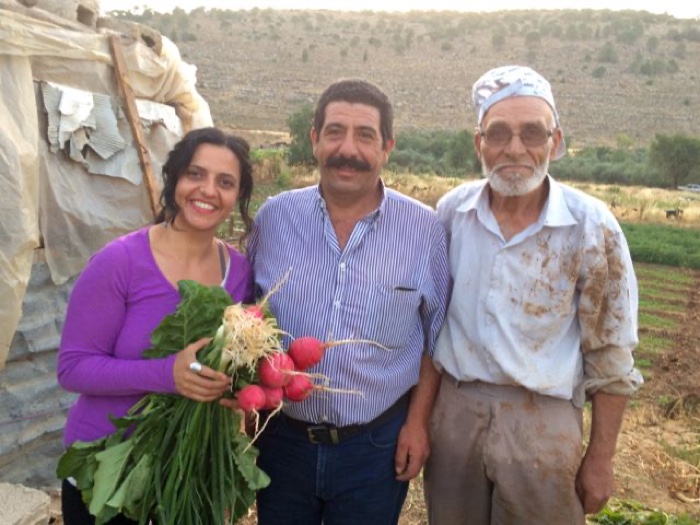
Vivien Sansour, Palestine Heirloom Seed Library, 2019
In 2014, Palestinian artist Vivien Sansour started looking for seeds to grow baladi bandora, a drought-resistant heirloom tomato. People in her community told her there were none left. Sansour later found that a huge range of other local vegetables bred by Palestinian farmers over thousands of years for their ability to thrive in their particular geologies and climate might soon disappear if nothing was done to rescue and revive them.
Her project Palestine Heirloom Seed Library attempts to save and revive her people’s agricultural heritage threatened by the spread of Israeli settlements, by climate change, by the challenges of growing food under militarily-enforced apartheid and by the introduction of industrial methods in the 1960s that saw the adoption of hybrid seeds – sterile and dependent upon manufactured fertilisers and pesticides.
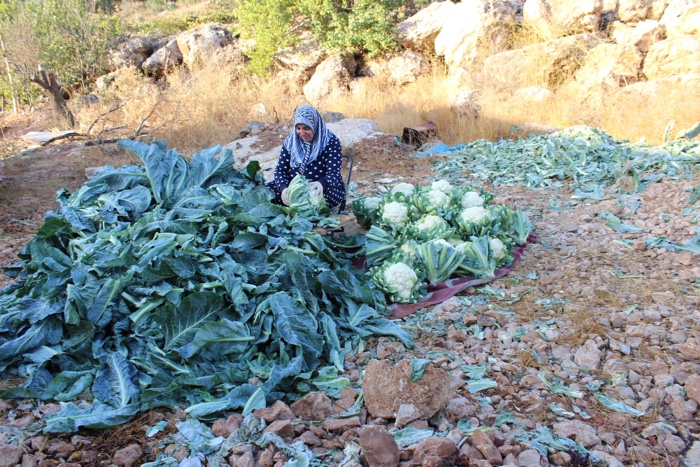
Vivien Sansour, Cauliflower harvesting season, Hebron 2020. © Vivien Sansour. Palestine Heirloom Seed Library
Sansour began crisscrossing the West Bank, searching for heirloom varieties to save and propagate not just as seed but also as cultural stories. To stimulate conversations and exchanges, the artist built a Traveling Kitchen, which can be dismounted and packed inside a car.
She firmly believes that saving ancient seed varieties means preserving cultural roots. With each seed comes a tradition, a way of life, a recipe, a set of knowledge, a story of who a community is. Palestine Heirloom Seed Library addresses thus what Boaventura de Sousa Santos has called epistemicide, a marginalisation of the knowledge and wisdom that had been in existence in the global South following the arrival of a colonising worldview.
Furthermore, heirloom seeds could actually offer a possible insurance policy against climate change. Some Palestinian varieties have remarkably drought-resistant properties that, in the context of climate change and water stress, could ensure greater food sovereignty for communities who have been living under Israeli occupation of the West Bank for decades.
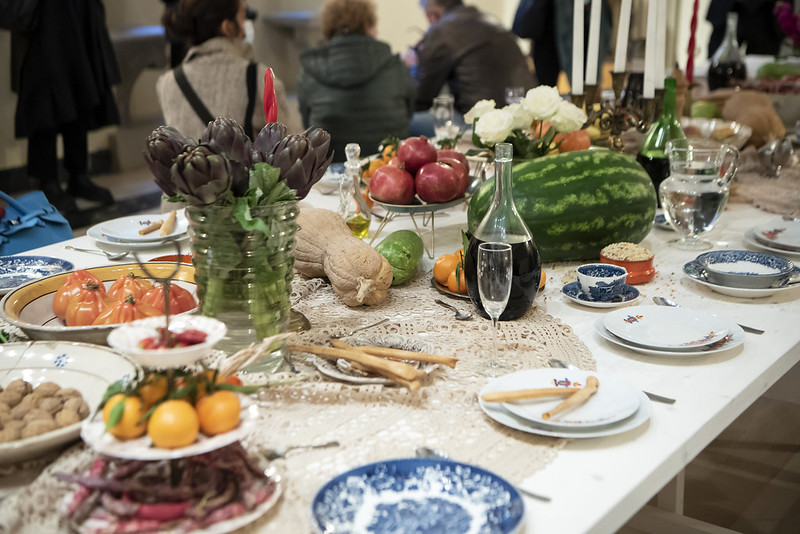
Vivien Sansour, Palestine Heirloom Seed Library. Exhibition view at Palazzo Boncompagni. Photo: Foto/Industria
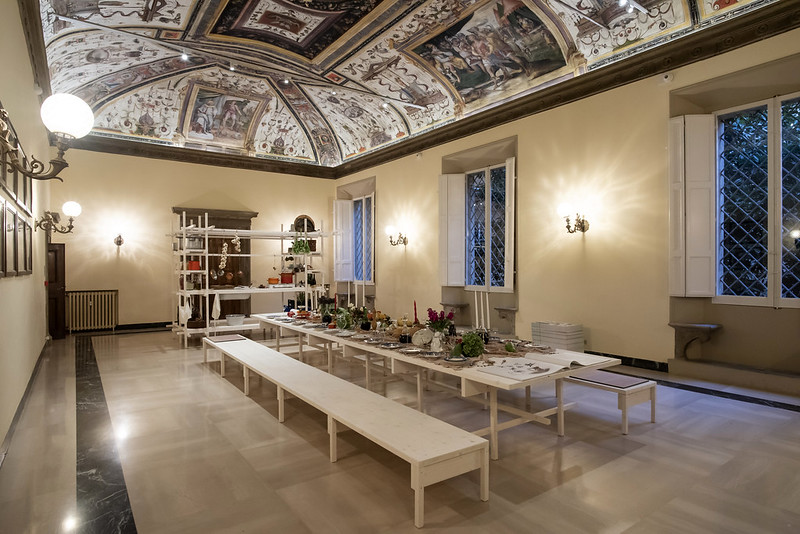
Vivien Sansour, Palestine Heirloom Seed Library. Exhibition view at Palazzo Boncompagni. Photo: Foto/Industria
The center of Sansour’s show in Bologna is a huge communal table covered in fresh produce to celebrate the importance of sharing food and saving both heirloom seeds and the stories that accompany them. In Palestine and everywhere around the world.
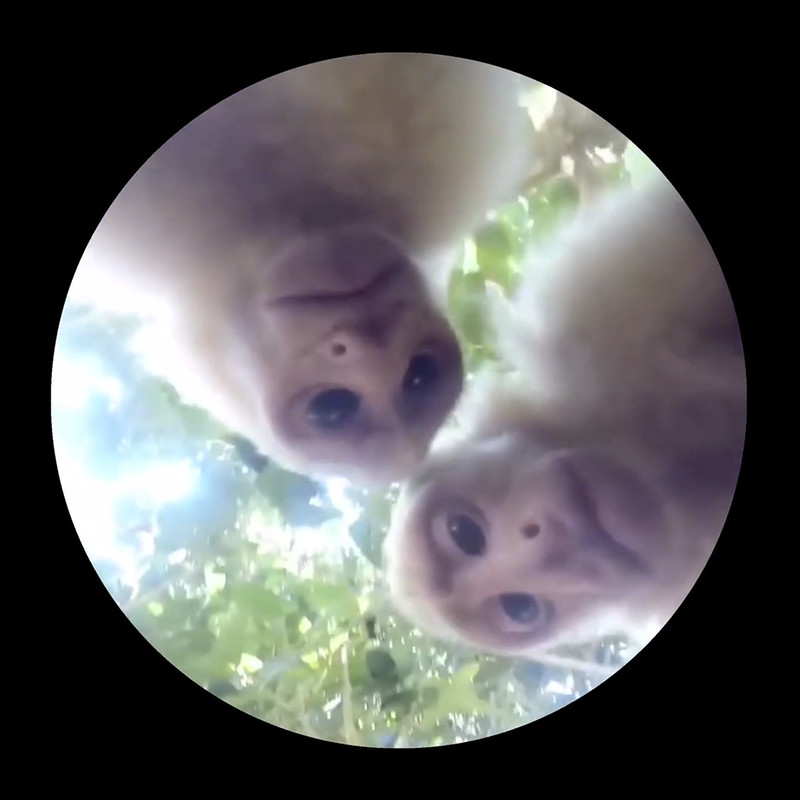
Mishka Henner, Scopes, 2021. Courtesy the Artist and Galleria Bianconi
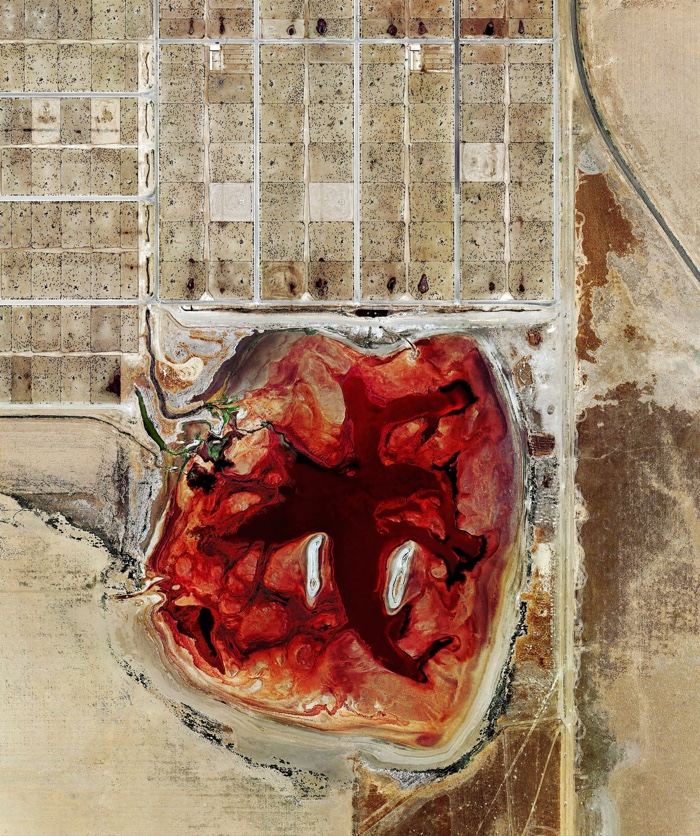
Mishka Henner, Coronado Feeders, Dalhart, Texas. From the series Feedlots. © Mishka Henner. Courtesy of the artist and Galleria Bianconi, Milano
Mishka Henner doesn’t shoot photos. He “makes” photos by grabbing images from the web. He then appropriates them and reveals realities that would otherwise be invisible to us. This was the process he used for the three projects selected for this exhibition.
The show opens with the iconic Feedlots, a series of blowups created by stitching together hundreds of Google Earth images. Seen from afar, the images look abstract. In reality, what you see are huge cattle farms or feedlots.
Also called CAFOs (Concentrated Animal Feeding Operations), feedlots host thousands of animals that are fed grains for the few months preceding their slaughter. In order to accelerate the growth of the livestock, their diet is “enriched” with hormones and antibiotics. Once fattened up, they are sent to the slaughterhouse.
The scale of the farming operations means that the amount of urine, manure (both tainted with the drugs fed to the animals) is massive. Further chemicals are needed to break down the waste as it collects in lagoons and drains into the soil. Different chemical cocktails explain the varying hues of each lagoon. The direct discharge of manure and the accompanying pollutants causes a serious public health risk. Feedlots have been associated with the contamination of groundwater, antibiotic resistance, air pollution and health problems suffered by farmworkers and nearby residents.
What makes Henner’s images particularly precious is that they show what should not be seen. Just like the vast majority of slaughterhouses in the USA and in Europe would not allow visitors to witness their operations, feedlots do not welcome of scrutiny of journalists and animal rights activists. So-called ag-gag laws were passed in several US states that make it illegal to photograph or document these farms. Henner somehow encountered a loophole in the legislation.
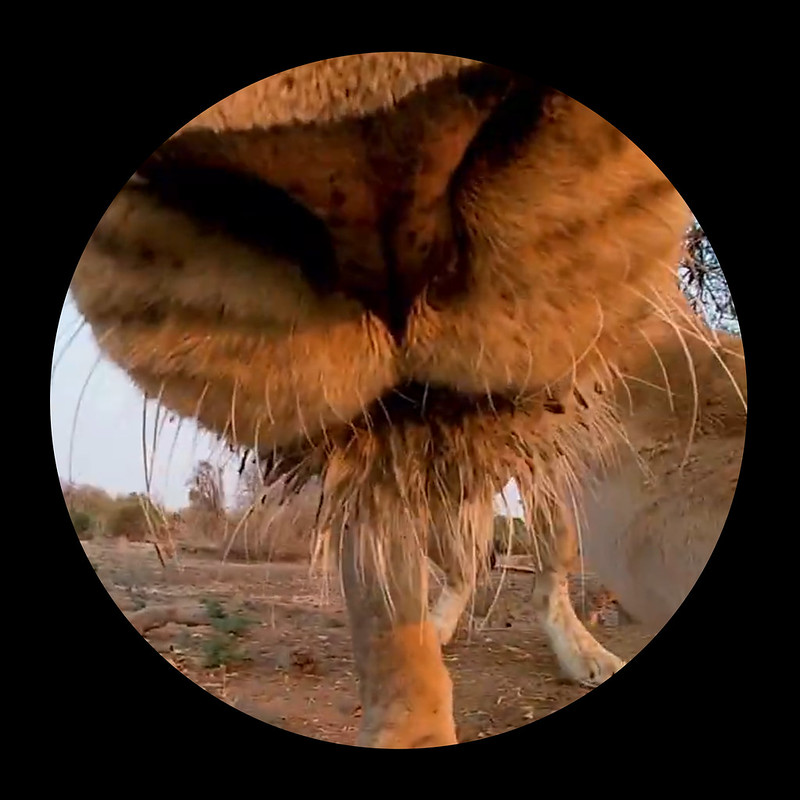
Mishka Henner, Scopes, 2021. Courtesy the Artist and Galleria Bianconi
Another series exhibited at Foto/Industrie is Scopes, which uses various videos found on YouTube and edits them to show a pig, an elephant and a lioness (at least I think it was a lioness) discovering a camera fallen from the sky, ingesting and then digesting it.
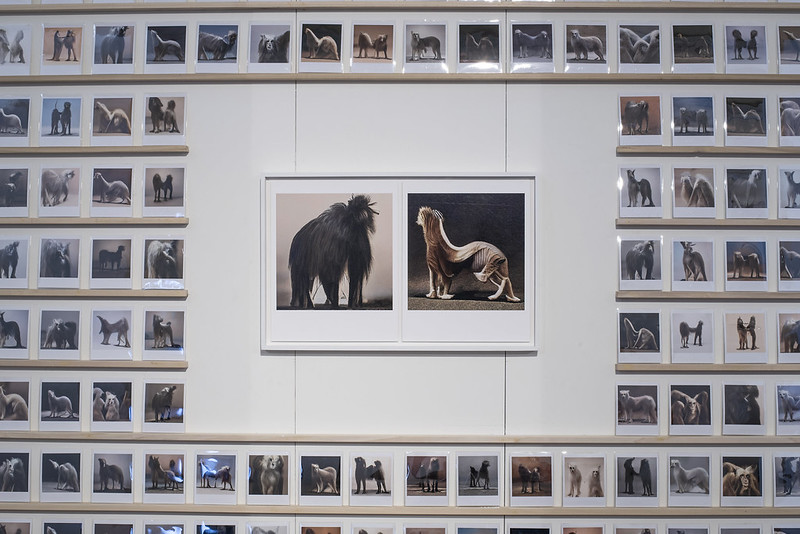
Mishka Henner, The Fertile Image, 2021. Image courtesy Foto/Industria
The third work on show is a new version of The Fertile Image. Generative Adversarial Networks (GANs) churn out photos of impossible animals that are the visual descendants from two parent images. The results are charming, eerie and fearsome.
It made me think of an article I read this week about the craze for lilac dogs and, more generally, all the animals we modify, commodify, crossbreed and otherwise engineer to suit our narcissistic and capitalistic imperatives. The AI-generated photos are bizarre and I wish I could share good close-ups of some of them. Unfortunately, the biennale only shared the one above and the photos I took are truly horrific.
Henner’s exhibition in Bologna is called In The Belly of the Beast. A very appropriate title for a show that explores how much the animal and mechanical worlds are trapped in an endless process of consumption, digestion and waste.
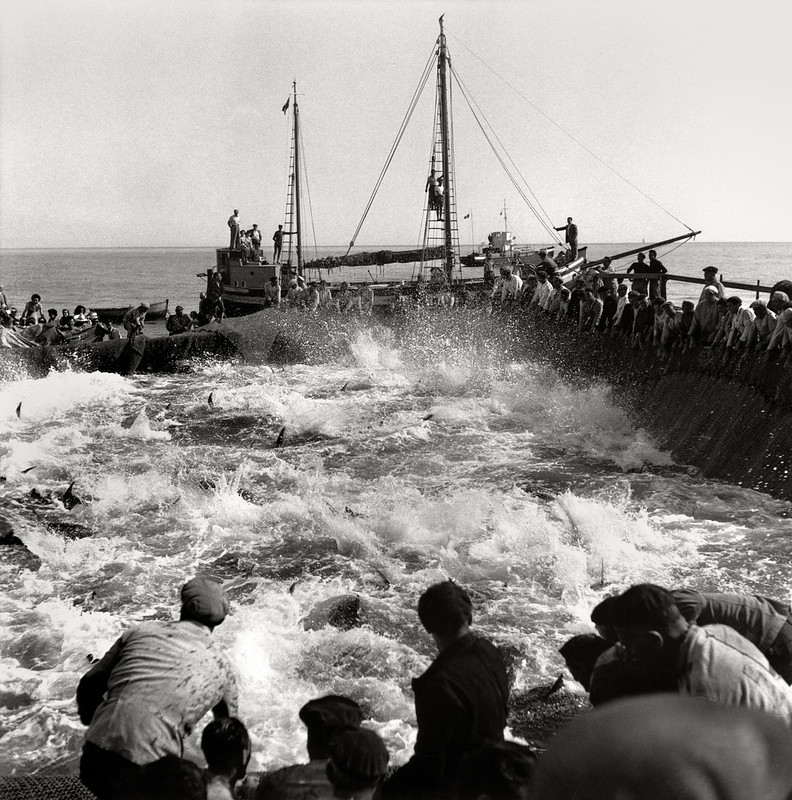
Herbert List, Favignana, 1951. The nets are raised slowly, while the men are singing an old song. The large boat has reached the many smaller boat in manner that a square is formed in which the fish are trapped
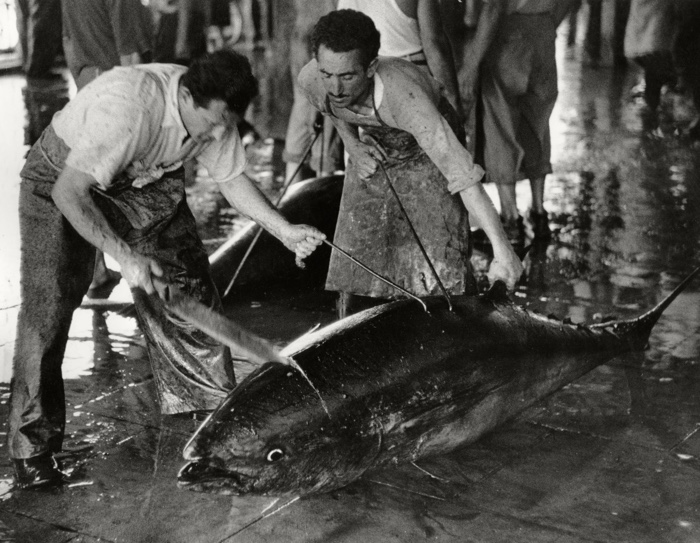
Herbert List, Favignana, 1951. The big head of the tuna is being cut off
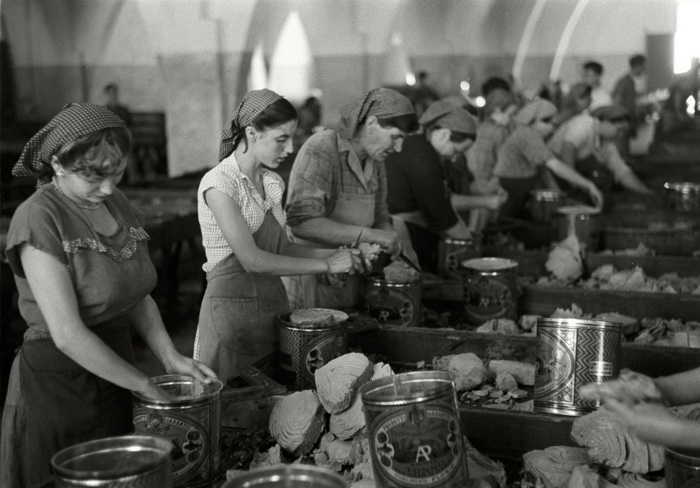
Herbert List, Favignana, 1951. The big tuna steaks are trimmed by hand and placed into big tins
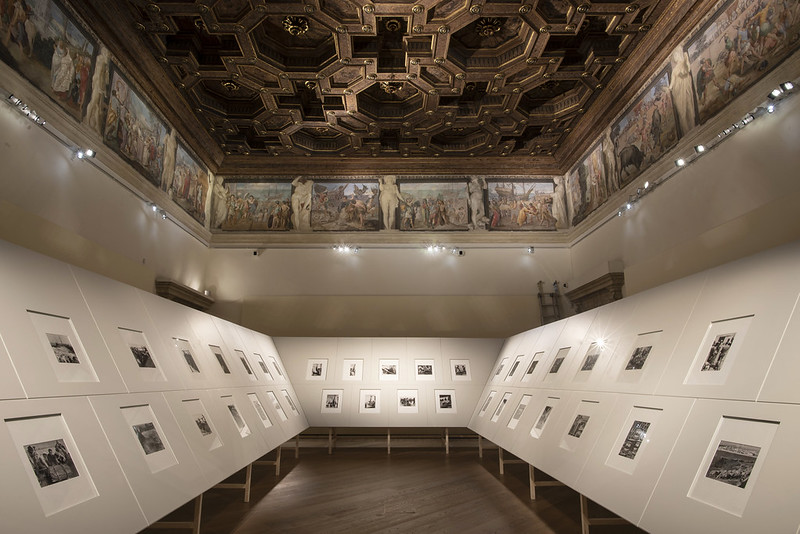
Herbert List, Favignana. Exhibition view at Palazzo Fava. Photo: Foto/industria
In 1951, Herbert List photographed the typical tuna fishing, slaughtering and processing on the Sicilian island of Favignana. In a calibrated sequence, List documents every step of the traditional tonnara practice.
There’s something almost viscous in List’s images. They recall the smell of blood and suggest the cruelty of the fishing industry but they also pay homage to the work of local communities and depict them as the last custodians of archaic knowledge.
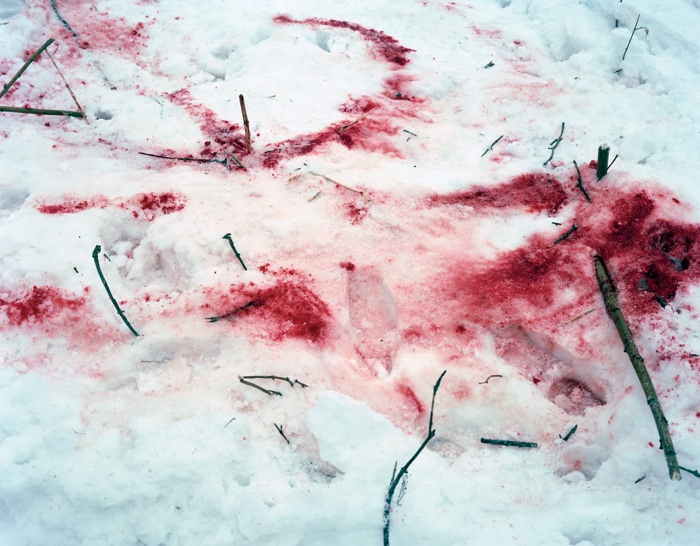
Takashi Homma, Trails
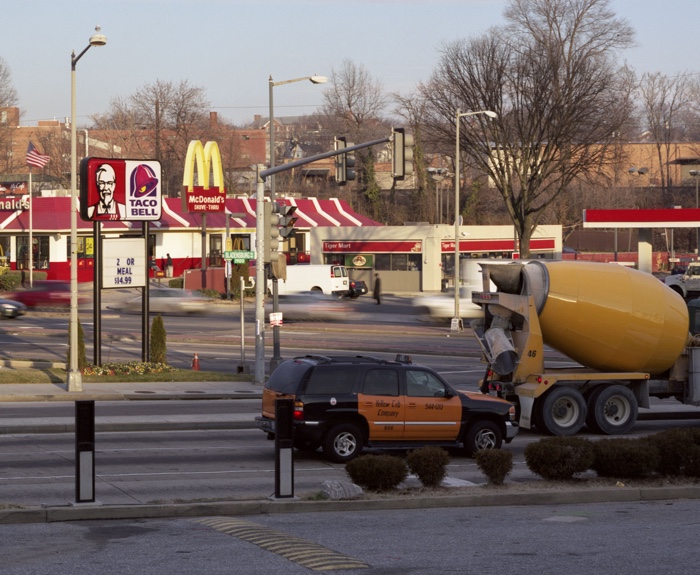
Takashi Homma, Washington D.C. 2009/2010 © Takashi Homma
Takashi Homma is showing two projects inside the Padiglione dell’Esprit Nouveau, a small pavilion designed by Le Corbusier but built by local architects at the outskirt of Bologna in the 1970s.
Both works suggest attitudes to meat consumption that are antithetical to each other. The first one is a series of shots of McDonald’s architecture around the world. The McDonald’s aesthetics is garish, a bit crappy, instantly recognisable but never fails to bring comfort to the amateurs of fast and cheap meals.
In contrast, The Trails follows the traces of blood left by deer wounded by hunters in the mountains on the island of Hokkaido. The cruel elegance and abstract lightness of the patterns in the snow recall traditional calligraphy.
Homma’s exhibition in Bologna opposes thus the speed of consumption with the patience of hunters who confront the source of their meals head-on.
More images from the Foto/Industria biennial:
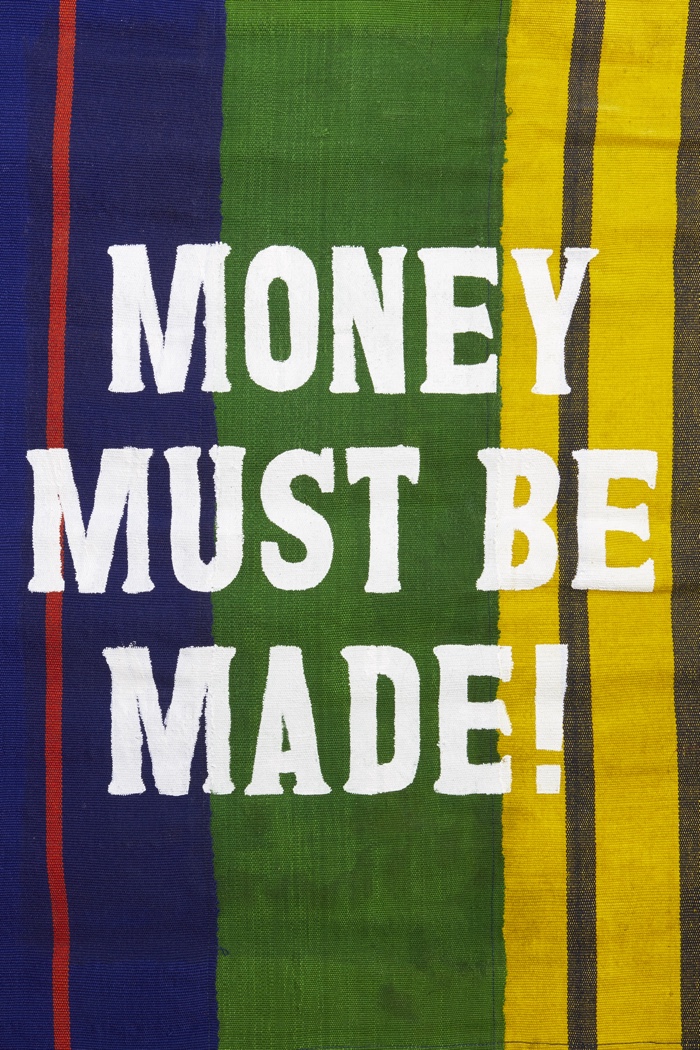
Lorenzo Venturi, Money Must Be Made
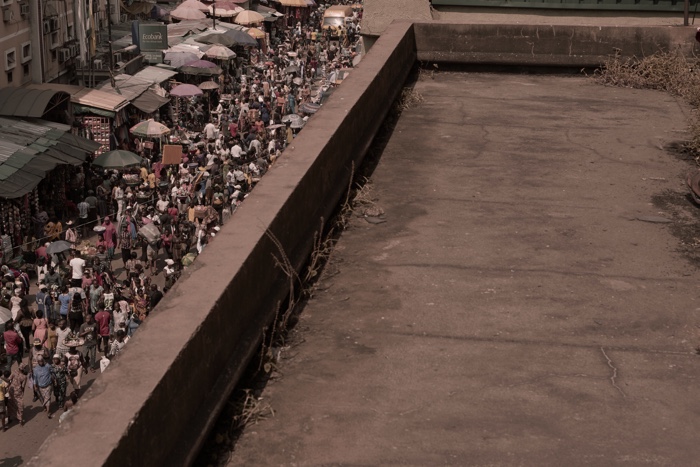
Lorenzo Venturi, Money Must Be Made
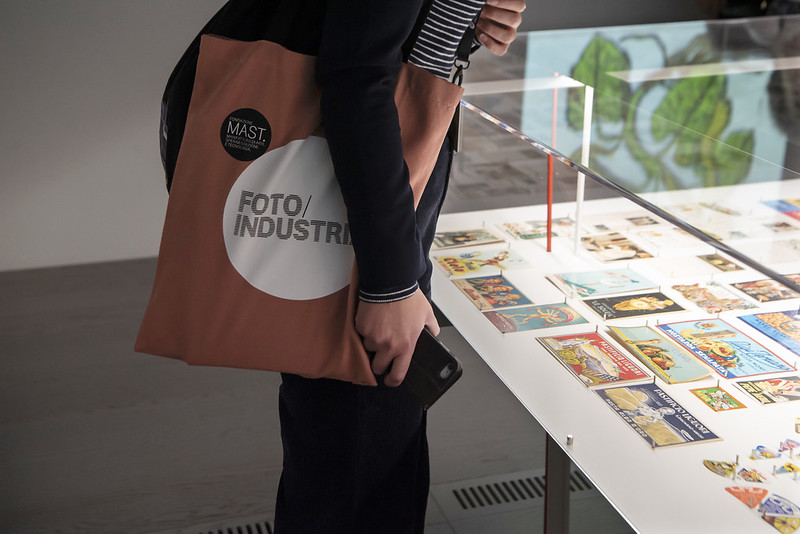
Ando Gilardi, Fototeca. Exhibition view at MAST. Photo: Foto/Industry
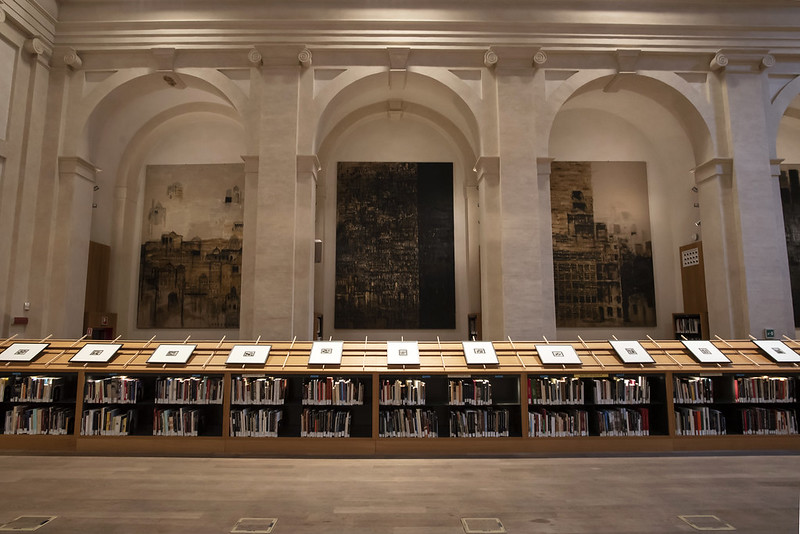
Hans Finsler, Schokoladenfabrik. Exhibition view at Genus Bononiae – San Giorgio in Poggiale. Photo: Foto/Industry
Foto/Industria was organised by the MAST Foundation and curated by Francesco Zanot. The exhibitions remain open until 28.11.2021 in historic locations thoughout the city center. Fototeca, at MAST and Laboratory of Forms at MAMbo are up until 2.01.2022. Entrance to all exhibitions is free.
Previous stories about Foto/Industria exhibitions: Prospecting Ocean. The extractivist Wild West and H+. We are all transhumanists now.
